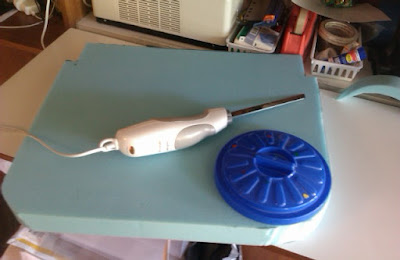Back in
this post I indicated that I was buying some elastic webbing to replace the old rubber diaphragm on the upright part of the passenger front seat.
Well I came home early today and made some progress.
First I fitted my vice to the workmate, then one by one, cut each piece of elastic and clamped the ends.
The fancy rubber cutters (orange handled things) I bought a year ago for this kind of thing weren't much use, hence the scissors (to the left of the strap). Thats' one...
Then, seeing as how I have misplaced my pokey tool, I used a 12V circuit tester to poke the hole through the elastic - the clamp already has a hole in the centre - how convenient.
Then insert one of the original wire hook thingys (someone please tell me what to call them) in both ends and...
One done.
All done - then I even had time to blog it. I only finished about 20 minutes ago.
By the way - this is how I determined the length of the elastic.
I measured the distance hole to hole for each of the seven strap positions on the seat.
Then I fiddled around pulling and testing the elastic and figured that I wanted a typical 500mm piece of webbing to be made from about 430mm - that gave me what I though was the right amount of "stretch". Since the wire hook things took off about 40mm all up, the formula became.
Webbing Cut Length = (hole_to_hole - 40) * 0.86
So I cut each webbing strap to that formula.
We will have to wait for the foam to go on before we see if I was right. It's a bit firmer than the old rubber support.
Funny thing - often in these past few posts when I want to type "Elastic" it comes out "Electric".






































